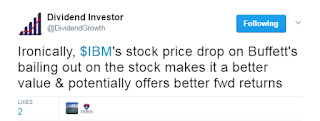Instead of droning on about one topic today, here are three things that are top of mind.
1. Activist Investors Push Granite REIT to Change
When I initiated a position in Granite REIT last spring, it was their combination of cheap P/FFO valuation around 10X and the above-average 4.5% distribution growth that attracted me to the company. Granite's management had just wrapped up a strategic review and decided to stay the course instead of taking any drastic action (i.e. a large strategic acquisition or divesture, putting itself up for sale, or paying a material one-time distribution). My investment in Granite REIT was a way for me to gain exposure to Magna (Granite's largest tenant), which is one of a handful of world-class companies we have in Canada, at an entry yield about double what Magna was paying at the time (6% vs 3%).
A couple weeks ago, FrontFour Capital Group and Sandpiper Group announced they had acquired a 6.2% stake in Granite REIT and released a plan to "unlock value at Granite REIT". FrontFour and Sandpiper have proposed two of their directors for the upcoming election of Granite's board of directors. At a very high level, Frontfour and Sandpiper argue that Granite trades at a substantial discount to its fair value due to a misunderstood asset base, strategic failures, and a loss of confidence in management and the Board. Granite responded somewhat on their Q1 2017 earnings call and more detailed via this proxy circular.
As a unit holder of Granite, the attention that the activist investors have shed on the company has been beneficial from a share appreciation perspective. Frontfour and Sandpiper raise some relevant issues concerning Granite's lack of strategic action, overcompensated management team, and misunderstood asset base. However, Granite's response to their dissident shareholders also makes some prevalent points about the returns they have been able to generate shareholders over the past five years in excess of the TSE REIT index, the lack of successful track records of FrontFour and Sandpiper within the REIT space, and the absurdity of some of the activists' suggestions (i.e. selling some major holdings around Toronto to show stakeholders how much they are truly worth).
With both sides continuing to argue their respective stances, I'm taking a wait a see approach as this is the first time one of my holdings is the target of activist investors. Even if FrontFour and Sandpiper are able to elect their two nominated directors to Granite's board, I question if they could push their agenda given strong opposition from the majority of directors. My view is that the activists have brought some additional coverage to Granite, forcing the company's management to justify their past inaction and firmly outline the path they are pursuing for future growth.
2. Special Prosecutor and Impeachment Talks Create Buying Opportunity
For those of you who keep close track of my Investment Holdings, you may have noticed some recent changes. The past week was officially my busiest ever, with three buys including initiating a new position in my Tax Free Savings Account. The combination of letting my cash build up to an uncomfortably high level (~8% of total holdings) and the downward momentum caused by the appointment of a special prosecutor to review the Trump Administration's ties to Russia both facilitated my three purchases. I'm considering another couple of investments outlined in my Q2 2107 watch list, and hope for continued volatility in the markets in the coming weeks.
3. Inconsistent Posting Schedule
As I struggle to meet my once a week posting goal, I feel that I owe an explanation to readers. Beyond my current lack of ideas for interesting posts, more time spent preparing for the software launch I've been working on at my job over the past two years, and quality time required by my super energetic near three year-old son, I have another great reason for my inconsistent posts. My wife and I are expecting our second child early this July. There have been numerous preparations for the birth of our baby daughter that have caused a shift in my priorities. Although I enjoy writing as an outlet and have always found it beneficial to review my decisions relating to past stock purchases/sales, with the more outward focus of this blog, I'm finding less time to make quality posts that would provide value to readers beyond myself. My expectation is that the number of entries I write will continue to decrease over the summer when our daughter arrives and likely continue on a downward trajectory for the foreseeable future.
Did you take advantage of the US market selloff this week to make any stock purchases???
